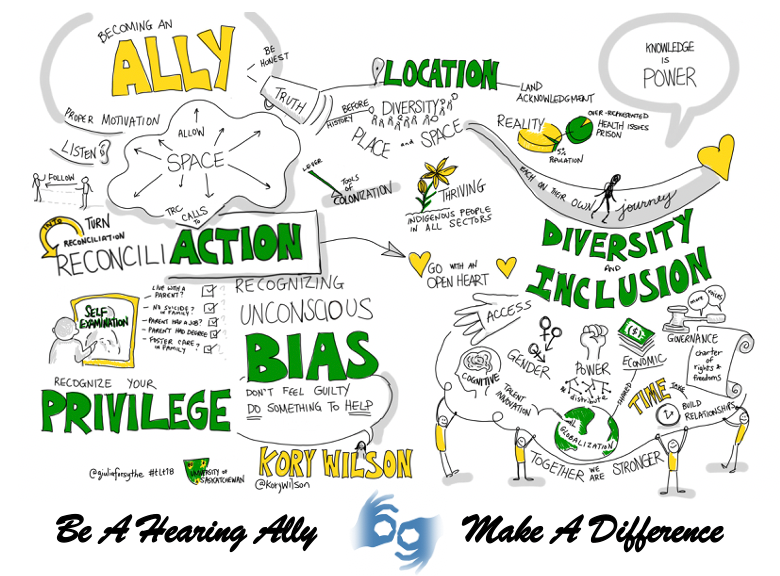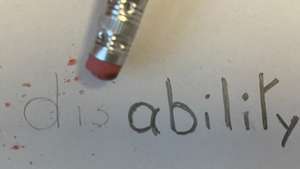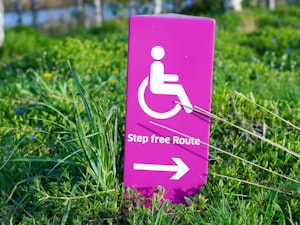One of the only silver linings of the COVID pandemic, is that people have become more aware of the detrimental consequences brought about by systemic racism and sexism, which have persisted in contemporary human civilization, and have started to speak up about them. Black lives matter, women in science, stop Asian hate, you name it. We have seen an unprecedented push from the general population, striving to correct for their unconscious biases and unintentional prejudice(s) against historically underrepresented groups. The election of Barack Obama in 2009 and of Kamala Harris in 2021 are excellent examples of a gradual transition to an increased representation of people of color and women in various disciplines in North America. Media coverage of diversity mostly surrounds ethnic backgrounds, but ableism - the discrimination in favor of able-bodied people - is seldom discussed when talking about equity and diversity, even though people with disabilities are not well represented in STEM. Combined with unconscious biases against deaf and hard-of-hearing (DHH) scientists, ableist behavior can cause traumatic experiences for hearing-impaired scientists. Here, I would like to provide a multi-scale recommendation for anyone wanting to become our hearing ally in STEM. By incorporating (some of) my suggestions, you will turn your awareness into concrete actions at the personal, departmental, university, or conference level.
Personal Level
There are many things you can do to lift unconscious bias against ableism at the personal level. The first and most important thing you can do is to be a hearing ally to your deaf friends and colleagues, and to stand up for them so they don’t always have to be the ones asking for accommodations themselves. During a first encounter with a DHH person, I strongly recommend that you first realize and control your unconscious bias before you communicate with them, and that you ask for their preferred way of communication in private. Additionally, you should understand their hearing-related challenges, including inaccessibility to incidental learning. You can do this either by directly asking them, or by reading my previous blog posts. To help accommodate a DHH individual for their inability to incidental learning, you can suggest them download the Otter AI mobile app for instant caption (if they don't have it already), invite them to group conversations, and be patient. Be aware that they likely suffer from stereotype threat and consider empathizing with their personal oppression experiences. To help lift the stereotype threat, it is critical to create a supportive and inclusive environment. As a colleague of a deaf individual, you should adopt a proactive attitude and never turn a blind eye to any existing oppression from other hearing co-workers toward them. Ask your friend/colleague whether they have a support network, and if you could join it. This can really make a difference, and will help them develop resilience against unpleasant experiences. Your personal effort and attitude toward disability injustice may seem negligible, but is indispensable for contributing to an inclusive working environment and for sparking real change in the STEM environment.
Mentor Level
You can strongly empower a DHH individual by becoming their mentor at any stage during their training. How do you best facilitate their entry into the group? You should be proactive and ask them for their needs and preferred communication format in private. Don’t assume that you know how to best accommodate for their needs, as they may vary from person to person. Instead, prevent potential miscommunication issues by asking them. Here, I will use the example of determining meeting scale with the DHH trainee, be it one-on-one or in group. In both circumstances, you must ensure effective communication by involving a captioner or a sign language interpreter. Next, it is particularly important that you inspire and guide the DHH trainee in their networking experience, since they have a bigger barrier to meeting others in the field. Besides, you should become their hearing ally, and try to provide them with career insights and advice to advance their research. For example, you should ensure that the trainee receives equal opportunities when attending a conference, assist their career navigation procedure (by referring them to career consultants in career center inside the university), provide several useful resources (e.g. bioinformatics links), and personalize their training plans (e.g. individual development plan). Should you realize that the laboratory atmosphere is unhealthy or unwelcoming to the DHH trainee, you must bear the responsibility to correct the ableism mistake with no tolerance. Finally, hearing mentors should treat the deaf mentee equally with other hearing mentee by offering them equal opportunities to collaboration and research opportunities, without prejudice concerning to their communication efficiency.
Departmental & University Levels
Above the mentor level, we can help make DHH individuals more well-represented in STEM education and academia at the departmental and university level. First, university admission offices, department chairs, and human resource offices should adopt and enforce equal employment opportunities when hiring qualified DHH candidates as students, postdocs, or faculty. Since the academic workforce is incredibly diverse and consists of people from many different cultural and ethnic backgrounds, universities should mandate diversity, equity, and inclusion (DEI) training for every university staff, regardless of their position. By doing so, universities can ensure that every member realizes and corrects their unconscious biases. This is a crucial step to provide every student and trainee with equal opportunities to receive uniform high-quality STEM education and training in a welcoming environment. Additionally, departments and universities should consider forming a DEI committee, inviting hoh/deaf employees on board to share their perspectives and, importantly, be willing to allocate resources to incorporate suggestions that come out of this committee. Last but not least, universities must allocate sufficient funds for providing every DHH student, trainee, and faculty the most suitable accommodation for their learning, research, and communication at their roles.
Conference Level
STEM conferences are critical venues where we can not only raise awareness, but also transform it into solid actions at the (inter)national level. DHH attendees are deprived of incidental learning and have difficulties engaging in conversations during conference events, such as discussions with expert panels, or poster sessions. To ensure equal opportunities for their conference experience, the conference leadership should consider forming a DEI committee that helps plan the conference. In addition, it is highly recommended to organize professional development workshops on DEI for all attendees, to raise awareness of the various barriers faced by people with different abilities and from different backgrounds. Since we aim to enact measures that best accommodate DHH attendees, it is strongly recommended to invite DHH leaders to join the DEI committees. The conference leadership cannot assume the needs of people with hearing loss, as the leadership committee does not have the experience or perspective for envisioning the most optimal accessibility arrangement at conference events. In additional, the conference leadership should provide equal opportunities to the historically underrepresented researchers, including those DHH, to showcase their research for both poster and on-stage presentations with the broader audiences.
To lift the communication barriers between speakers and attendees in both virtual and in-person conferences, the conference leadership should do their absolute best to allocate sufficient funds to hire sign language interpreters (e.g. Interpretek) and/or real-time captioners (CART) (e.g. White Coat Captioning, CaptionSync) to facilitate no-barrier communications. During both virtual and in-person conference events, we should incorporate and adopt accommodations with universal design to generate an inclusive environment for all attendees. For instance, all symposium and expert panel discussion sessions should have built-in closed captions for the speakers on the screen boards, at least from Artificial Intelligence-driven software (e.g. Otter AI). However, these computer-generated captions are not accurate enough to provide equal access for compliance with the ADA. Therefore, if accommodation funds allow, the conference leadership should explicitly provide the contact information of the person responsible for accommodation inquiries on their conference website and should include it in welcome emails. These steps are crucial to provide DHH attendees with equal accessibility and rights to engage in every conference event in which they are interested.
Overall, the measures I discussed here are practical steps that can be implemented instantaneously to overcome our unconscious biases, and to build a more inclusive environment for everyone in STEM, especially those with hearing loss. I sincerely hope that my suggestions will help improve the diversity, equity, and inclusion in STEM, which I believe is indispensable to advancing scientific and technological knowledge.
Disclaimer: I do not partner with, or have any financial interest from captioning or sign language interpreters listed in this blog post. Suggestions and opinions reflected in this article are my own, and do not reflect my sponsor, department, or university.
About the author: Lok Ming (Tom) Tam is a toxicologist and a postdoctoral researcher at the University of Rochester, where he investigates mechanisms of aging. He is passionate about advancing public health and societal wellbeing. Connect with Tom on Twitter.
We welcome comments, questions and feedback. Please contact us at ecrlife [dot] editors [at] gmail [dot] com.
Would you like to share your own story, insight or opinion? Pitch us here.
Follow us on Twitter or LinkedIn to stay up to speed with our latest news and blog post releases.






